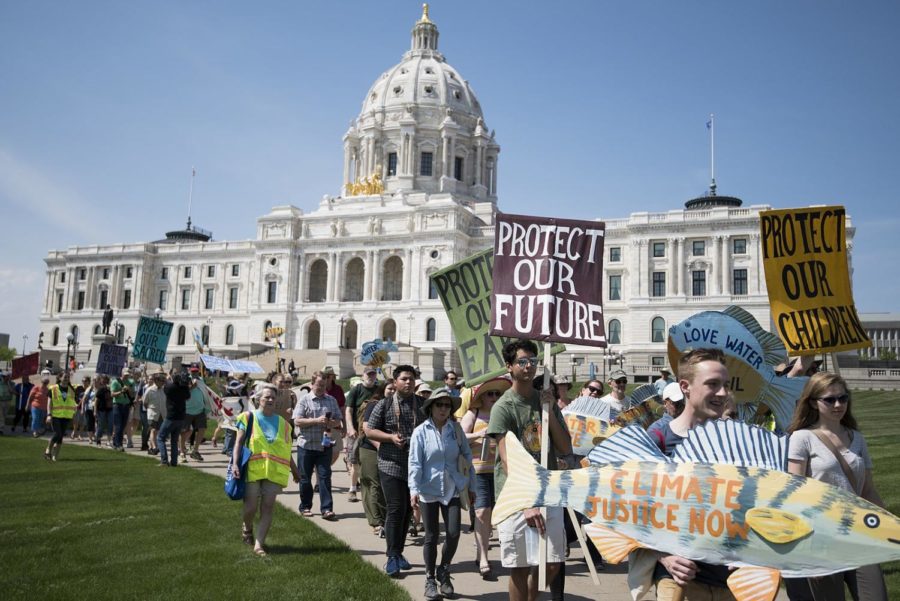Line 3 Pipeline And Why It Could Be Dangerous
September 24, 2021
Line 3 is a pipeline that’s been built to carry almost a million barrels (33,180,000 gallons) of tar sands per day. This pipeline goes from Alberta, Canada all the way to Superior, Wisconsin. The pipeline was proposed by Enbridge, a pipeline company with its headquarters in Canada. “Tar sands are a mixture of sand, clay, water, and bitumen [more commonly known as asphalt],” states an article from the American Geo-science Institute. Tar sands is a very crude oil. This oil is so crude that the Oil Climate Index reports that 31% more carbon is emitted by tar sands than by regular oils.
Enbridge is the company that is responsible for one of the nation’s biggest on-land oil spills. The pipeline will go through over 200 bodies of water and an unknown number of wild rice fields. The fact that the pipeline goes through these bodies of water is important because pipelines spill very often, and every oil spill has horrible impacts on the surrounding environment and all of the animals living in it.
Another reason why this pipeline could cause potential problems is that it goes through land that belongs to the Anishinaabe peoples. Since the pipeline goes through their wild rice waters, it threatens the Anishinaabe people’s food resources. If and when Line 3 spills, it could be detrimental to the indigenous people in general and to their food supply in particular. The wild rice that this pipeline is going through is also a huge part of Anishinaabe culture.
Many indigenous people are protesting against this pipeline for how crude the oil is and how many treaties it goes against. They call themselves “Water Protectors.” Many of them have been arrested for trying to keep their sacred land safe. About 773 had been arrested as of August 28th, according to Truthout.org. Several protests have taken place and more are intended to take place. Tar sands are set to be flowing through this pipeline in October, so the people who want to keep their land and water safe are trying to work fast to stop tar sands from flowing through this pipeline.
This Line 3 Project is not the first of its kind. This is the pipeline that is being replaced. This pipeline is going over a very different route compared to that of the original. The original Line 3 is not going to be used, but Enbridge is still letting it sit there. Letting this pipe sit in the sun can risk the pipe’s coating flaking off and doing even more damage to the surrounding environment. When the coating flakes off, it releases toxic compounds, posing a health risk to the people that live nearby.
Since the Water Protectors have to work fast, they are asking for everyone’s help. On Stop Line 3 they are encouraging people to donate to Honor the Earth, an indigenous-led advocacy group, or to donate directly to the people in Minnesota fighting to stop Line 3. However, if someone does not have the money to donate they are encouraged to learn about Line 3. This will help stop the pipeline because when someone is more informed they can educate others about the possible problems this pipeline will cause.





















































































































































